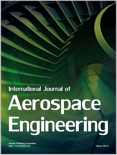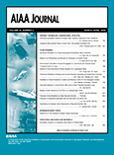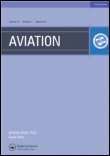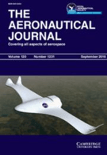
TRANSACTIONS OF THE JAPAN SOCIETY FOR AERONAUTICAL AND SPACE SCIENCES
Scope & Guideline
Exploring the Frontiers of Aerospace Innovation
Introduction
Aims and Scopes
- Aerodynamics and Fluid Dynamics:
Research in this area explores the behavior of air and other fluids in motion, including studies on aerodynamic characteristics, shock wave interactions, and fluid-structure interactions related to aircraft and spacecraft. - Spacecraft Dynamics and Control:
This scope encompasses the study of spacecraft maneuverability, attitude control systems, and the dynamics of space systems, focusing on innovative control methods and system designs. - Propulsion Systems:
The journal covers various propulsion technologies, including chemical and electric propulsion systems, hybrid thrusters, and novel micropropulsion methods aimed at enhancing performance and efficiency. - Flight Operations and Management:
Research in this area includes studies on air traffic management, flight optimization, and operational strategies for both manned and unmanned aerial vehicles, emphasizing efficiency and safety. - Space Exploration Technologies:
This scope focuses on the design and development of technologies for space exploration, including satellite systems, lunar missions, and innovative materials for space applications. - Data and Simulation Techniques:
The journal emphasizes the use of numerical methods, simulations, and machine learning approaches to solve complex problems in aeronautics and space sciences, enhancing predictive capabilities and operational insights.
Trending and Emerging
- Autonomous Systems and AI Applications:
There is a growing emphasis on the application of artificial intelligence and machine learning in aeronautics, particularly in autonomous flight operations, trajectory optimization, and predictive maintenance. - Sustainable Aviation Technologies:
Research is increasingly focused on developing greener technologies for aviation, including studies on fuel efficiency, reduced emissions, and environmentally friendly propulsion methods. - Advanced Materials and Structures:
Emerging research on innovative materials, such as nanomaterials and adaptive structures, is gaining prominence, reflecting the need for lightweight and durable components in aerospace applications. - Space Debris Management and Mitigation:
With the increasing number of satellites, research addressing the challenges of space debris and strategies for mitigation is becoming a critical focus area for the journal. - Integration of Ground and Space Systems:
Recent publications highlight the importance of integrating ground-based and space-based systems, particularly in communication technologies and environmental monitoring applications, indicating a trend towards comprehensive system designs.
Declining or Waning
- Conventional Aerodynamics Studies:
There is a noticeable decline in traditional aerodynamic studies that do not leverage advanced computational techniques or new materials, as the field shifts towards more innovative and applied research. - Static Performance Analysis:
Research focusing solely on static performance metrics without incorporating dynamic analysis or real-world applications seems to be waning, as there is a growing preference for studies that address dynamic and operationally relevant scenarios. - Classical Flight Mechanics:
Papers that cover basic principles of flight mechanics without integrating modern technologies or methodologies are becoming less common, indicating a shift towards more complex and multifaceted approaches.
Similar Journals

Chinese Space Science and Technology
Advancing Knowledge in Aerospace EngineeringChinese Space Science and Technology is a pivotal journal dedicated to advancing the field of space engineering and technology, published by the esteemed Chinese Academy of Space Technology. With an ISSN of 1000-758X, this publication serves as a significant platform for cutting-edge research from China and around the globe, spanning vital intersections of Aerospace Engineering, Electrical and Electronic Engineering, and Materials Science. As evidenced by its Q3 ranking in 2023 across these categories, the journal consistently showcases innovative studies that contribute to the development of space technology, thereby impacting both theoretical frameworks and practical applications in the industry. Researchers and professionals will find valuable insights within its pages, while students can enrich their educational journey through its wealth of knowledge. Though primarily published in print, the journal continues to foster collaboration and engagement among the academic community, offering a glimpse into the future of space exploration and technological advancements through its relevant and timely content.

Journal of the Global Power and Propulsion Society
Driving the Future of Aerospace and Mechanical EngineeringJournal of the Global Power and Propulsion Society, published by GLOBAL POWER PROPULSION SOC, is a premier open-access journal established in 2017, dedicated to the dissemination of innovative research and advancements in the fields of aerospace engineering, industrial and manufacturing engineering, and mechanical engineering. Based in Zug, Switzerland, this journal provides a critical platform for researchers, professionals, and students to engage with cutting-edge studies and emerging technologies that are pivotal to the aerospace and propulsion sectors. With an impressive categorization in the Q2 quartile for multiple engineering specialties in 2023, the journal reflects its commitment to quality and rigor in its peer-reviewed articles. Moreover, it holds substantial visibility in the academic community, as evidenced by its Scopus rankings. The Journal of the Global Power and Propulsion Society stands at the intersection of innovation and collaboration, aiming to foster knowledge sharing globally while enhancing the operational capabilities of power and propulsion technologies.

International Journal of Aerospace Engineering
Elevating Research, Transforming AerospaceThe International Journal of Aerospace Engineering, published by HINDAWI LTD, stands at the forefront of innovation and research in the field of aerospace engineering. With an impact factor reflecting its contributions to the discipline and classified in Quartile 3 (Q3) for the year 2023, this journal provides a platform for high-quality, peer-reviewed articles that delve into advancements and challenges in aerospace technology and applications. Since its inception in 2008, the journal has embraced an Open Access model, promoting unrestricted dissemination of research findings to foster collaboration and knowledge sharing among researchers, professionals, and academia. The journal covers a broad spectrum of topics, aiming to enhance understanding and give insight into aerospace engineering's multifaceted aspects. With its coverage in the Scopus database, ranking 71 out of 153 in the aerospace engineering category, the journal is a valuable resource for those engaged in this dynamic field, ensuring that high-impact research receives the visibility it deserves.

AIAA JOURNAL
Pioneering Discoveries in Aerospace Engineering ExcellenceAIAA JOURNAL, published by the American Institute of Aeronautics and Astronautics, stands as a premier peer-reviewed platform for cutting-edge research in the field of aerospace engineering. With an esteemed Q1 classification in the Aerospace Engineering category and a notable rank within the top 20% of its field according to Scopus, this journal has become an essential resource for researchers, professionals, and students alike. Spanning over six decades of impactful scholarship from 1963 to 2024, the AIAA JOURNAL contributes significantly to the advancement of aerospace technologies and methodologies. While it does not offer open access, its rigorous editorial standards and impactful articles ensure that it remains a vital source for those seeking to stay at the forefront of aerospace innovation. Explore the rich tradition of excellence and stay informed on the latest discoveries that shape the world of flight and space exploration.

Aviation
Advancing the frontiers of aerospace engineering.Aviation, published by Vilnius Gediminas Technical University, is a leading open-access journal dedicated to the dynamic field of aerospace engineering, with an ISSN of 1648-7788 and E-ISSN of 1822-4180. Established in 2004 and set to converge in 2024, this journal aims to disseminate high-quality research that advances the understanding and application of aerospace technology. With an impact factor reflective of its contribution to the discipline, Aviation ranks at Q4 in the Aerospace Engineering category and occupies the 80th position out of 153 in Scopus, highlighting its growing significance among scholarly publications. By providing free access to its content since 2018, the journal enhances its reach and encourages collaborative efforts in the academic community, catering to researchers, professionals, and students eager to explore innovative studies and findings within aerospace engineering. Based in Lithuania, this journal serves as a vital resource for those aiming to contribute to the future of aviation.

AERONAUTICAL JOURNAL
Innovating the future of aeronautical research.Aeronautical Journal, published by Cambridge University Press, is a premier scholarly journal dedicated to advancing the field of aerospace engineering. With a notable impact factor, this journal holds a strong position in the academic community, ranked #53 out of 153 in the Scopus category of Aerospace Engineering, placing it in the 65th percentile. The journal has been providing a platform for groundbreaking research since its inception in 1969, and continues to be a vital resource for researchers, professionals, and students involved in aeronautics. As a Q2 journal in the 2023 Aerospace Engineering category, it offers high-quality articles that cover a range of topics within the discipline, contributing to the ongoing discourse and innovation in aerospace technologies. Although not an open-access journal, it remains accessible to a vast readership through institutional subscriptions and partnerships. The Aeronautical Journal is a crucial publication for those seeking to stay at the forefront of aerospace research and development.

Journal of the Korean Society for Aeronautical and Space Sciences
Advancing Global Collaboration in AeronauticsThe Journal of the Korean Society for Aeronautical and Space Sciences is a dedicated platform for the dissemination of cutting-edge research in the fields of aerospace engineering and space sciences. Published by the esteemed Korean Society for Aeronautical & Space Sciences, this journal aims to bring together innovative findings and technological advancements from around the globe, thereby contributing to the ongoing development of the aerospace sector. Operating from South Korea, the journal holds an ISSN of 1225-1348 and an E-ISSN of 2287-6871, catering to both print and digital scholarly communication. Although categorized in Q4 within the Aerospace Engineering segment and ranked 139 out of 153 on Scopus, the journal plays a crucial role in fostering research collaboration and knowledge exchange among professionals, researchers, and students alike. With converged years from 2019 to 2024, it continuously seeks to enhance its contributions to the academic community through rigorous peer review and publication of original research. Given the evolution of aerospace technologies, this journal is vital for anyone involved in aeronautical research, ensuring that their work reaches the right audience.

International Journal of Aviation Aeronautics and Aerospace
Pioneering Insights in Aerospace Engineering and TechnologyInternational Journal of Aviation Aeronautics and Aerospace, published by Embry-Riddle Aeronautical University, serves as a pivotal platform for the dissemination of innovative research in the fields of aerospace engineering, civil and structural engineering, and safety, risk, reliability, and quality. With an ISSN of 2374-6793 and designated as an open access journal since 2014, it enables unhindered global access to its scholarly content, fostering collaboration among researchers, professionals, and students in the aviation sector. The journal's presence spans from 2014 to 2024 and is recognized within the Q3 category across multiple engineering domains according to recent metrics. Despite its emerging status, it holds respectable rankings in Scopus, demonstrating its relevance and contribution to the academic community, particularly in dynamic engineering sectors. It is an essential resource for anyone looking to enhance their understanding of advancements and challenges in aviation and aerospace solutions.

International Journal of Turbomachinery Propulsion and Power
Exploring breakthroughs in aerospace and energy engineering.The International Journal of Turbomachinery Propulsion and Power, published by MDPI, is a pivotal scholarly platform devoted to advancing the field of turbomachinery, propulsion technology, and power systems. Since its inception in 2016, this open-access journal has provided an invaluable resource for researchers, professionals, and students within the realms of Aerospace Engineering, Energy Engineering, and Mechanical Engineering. With its current ranking in the Q3 category across these disciplines and its strategic placement in Scopus, the journal facilitates the dissemination of cutting-edge research findings and innovative solutions. The commitment to open access, effective from 2017, ensures that high-quality research is readily accessible, fostering collaboration and knowledge sharing in the global academic community. As it continues to expand its scope through 2024, the journal remains a crucial avenue for discussion, experimentation, and advancement in turbomachinery and energy-related studies.

Space: Science & Technology
Advancing the Frontiers of Aerospace InnovationSpace: Science & Technology is a premier, open-access journal published by the American Association for the Advancement of Science, dedicated to advancing knowledge in the rapidly evolving fields of aerospace engineering and space sciences. Since its inception in 2021, the journal has rapidly established itself as a vital resource, achieving an impressive Q1 ranking in Aerospace Engineering and Q2 ranking in Space and Planetary Science as of 2023. With a Scopus rank placing it 45th out of 153 in Aerospace Engineering and 47th out of 104 in Space and Planetary Science, it serves as a critical platform for researchers, engineers, and students alike to disseminate their findings and engage with the latest developments in their field. The journal encourages innovative research articles, technical notes, and reviews that push the boundaries of what's possible in space exploration and technology. With its commitment to open access since 2021, Space: Science & Technology ensures that pioneering research is readily available to a global audience, promoting collaboration and knowledge sharing in an increasingly interconnected scientific community.